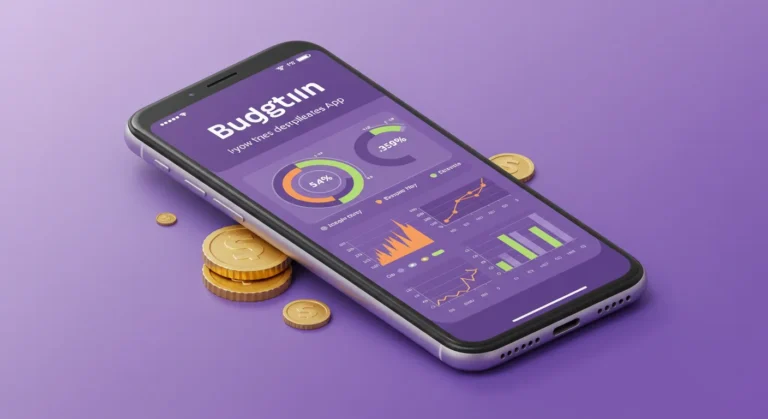What is the best budgeting app? It’s a question so many of us find ourselves pondering, especially in today’s fast-paced financial landscape. Whether you’re saving for a big purchase, managing living expenses, or simply trying to make sense of your spending habits, having a reliable budgeting tool can change the game. But with a multitude of options out there, how do you choose the right app that suits your specific needs? Let’s embark on this financial journey together and uncover what makes a budgeting app truly the best.
Choosing the best budgeting app is more than just picking the most popular one on the market. You need a tool that resonates with your personal financial story, capacity, and ambition. The right app bridges the gap between curbing unnecessary expenses and smartly planning for future investments. Understanding the features and capabilities of these apps allows you to transform your financial chaos into a crisp strategy.
As someone who has explored various budgeting methods, I can attest to how daunting it can be to stick to a budget without the right support. Some apps carve out paths through our financial forests, while others leave us feeling lost. Here, I’ll break down what makes an app not only functional but also compelling—because budgeting shouldn’t feel like a chore; it should empower you.
This guide aims to simplify your options, offering deep analysis and insight into the crucial factors that separate good budgeting apps from the best. We’re not just going to skim the surface; let’s dive into the nitty-gritty of features, user experiences, and expert-reviewed capabilities to help you decide which app deserves a permanent spot on your device.
Understanding Your Budgeting Needs
Before even downloading an app, it’s essential to reflect on your own budgeting style. Are you a meticulous planner or a spontaneous spender? Knowing your tendencies plays a significant role in identifying the best budgeting app for your needs.
Identifying Your Financial Goals
Start with some introspection. Are you looking to save for a vacation, pay off debt, or just keep track of daily expenses? Write down your financial goals. Some apps excel in certain areas—like saving or debt management—while others focus on expense tracking or investing options.
Consider Your Compatibility with Technology
Are you comfortable using technology? Many users prefer intuitive interfaces that guide them through the budgeting process without feeling overwhelmed. Think about whether you want an app that syncs with your bank account for real-time tracking or one that requires manual entry.
Essential Features of Top Budgeting Apps
Once you know what you need, it’s time to explore the essential features provided by budgeting apps. Not all apps are created equal, and specific functionalities can critically influence your experience.
Expense Tracking
A solid budgeting app should allow you to categorize your expenses easily. The most effective tools offer visual representations, like graphs or pie charts, to help you quickly grasp where your money is going each month.
Goal Setting
The best budgeting apps enable you to set financial goals, whether it’s saving for a family trip or a down payment on a house. This feature doesn’t just motivate you; it provides structured pathways to reach these goals.
Reporting and Analytics
Progress is important. Look for apps that provide detailed analytics to show how your spending habits change over time. Insights like these can reveal patterns you might not have noticed otherwise—enabling smarter decisions.
Popular Budgeting Apps to Consider
While the list of options is extensive, here is a curated selection of the best budgeting apps out there—each catering to different user needs and preferences.
YNAB (You Need a Budget)
Known for its proactive approach to budgeting, YNAB is perfect for those who want to take control of every dollar they earn. It emphasizes planning ahead, encouraging users to allocate their income to savings, bills, and discretionary spending actively. With educational resources available, it also teaches valuable budgeting skills.
Mint
Mint is widely recognized for its user-friendly interface and robust features. It allows seamless syncing with bank accounts, providing a holistic view of your finances in one spot. Its strength lies in its categorization of transactions, setting reminders for bills, and tracking credit scores—all crucial for anyone looking to manage their finances effectively.
EveryDollar
If you’re a fan of a straightforward budgeting method, EveryDollar might be your best fit. With a very basic yet effective layout, it follows the zero-based budgeting approach, allowing you to track where every dollar is allocated. Plus, the premium version includes bank connectivity, which makes tracking even easier.
User Experience and Community Feedback
One of the best ways to gauge the effectiveness of a budgeting app is through user experiences and feedback. Hearing from real users can give you insights that marketing materials cannot.
Community Forums and Reviews
Many apps have dedicated forums or community spaces where users share experiences, tips, and challenges. Reviewing these can help you understand the app’s long-term sustainability and customer support quality.
Expert Opinions
Consulting articles or videos from financial experts who review these apps can also shed light on their efficiency. Experts often address features you might not consider as significant but are actually crucial for your budgeting journey.
Integrating the Best Budgeting App into Your Life
The last piece of the puzzle is effective integration. No app can work wonders unless you engage with it consistently. Let’s explore some strategies to embed this tool into your daily routine.
Establish a Routine
Pencil in time each week to log your spending or review your budget. Whether it’s Sunday evenings with a cup of coffee or daily check-ins after work, consistency is key.
Engage with Your Financial Goals
As you engage more with your app, tailor your goals based on what you are learning. Perhaps you’ve found you can indeed save more than you thought—let that spur you on to create bigger plans!
Stay Motivated
Celebrate your achievements, no matter how small. Did you stick to your budget for a month? Reward yourself with a little treat—it’ll reinforce your commitment and keep motivation high.

Useful links
Conclusion
As we wrap up our exploration of the best budgeting apps, it’s clear that the ideal choice ultimately depends on your unique financial lifestyle and goals. Some apps excel with automation and integration, while others shine with simplicity and customizable features. For instance, if you crave detailed insights and data, you might lean towards options like YNAB or Mint. On the other hand, if you prefer a user-friendly interface that makes managing your budget stress-free, maybe EveryDollar or GoodBudget is your answer.
Embarking on your budgeting journey with the right app can significantly impact your financial wellness. It’s not just about tracking your spending; it’s about gaining control over your finances and fostering a healthier relationship with money. Reflect on what features resonate with you: Do you want to track expenses visually, set savings goals, or integrate bills seamlessly? Identify your must-haves, and don’t hesitate to experiment.
In the end, the best budgeting app is the one that empowers you to achieve your financial dreams, however big or small. It’s about transforming your budget from a mundane task into a powerful tool that enables you to live life on your terms. So, choose an app that speaks to you, invest your time in it, and watch as it helps turn your aspirations into reality.
Frequently Asked Questions
What should I look for in a budgeting app?
When choosing a budgeting app, prioritize features that align with your financial habits and goals. Look for user-friendliness, customization options, and essential features like expense tracking, goal setting, and possibly even bill reminders. Integration with bank accounts and support for various devices can enhance usability. Security is also crucial; ensure the app uses robust measures to protect your sensitive information. Ultimately, the best app should make budgeting intuitive and engaging for you.
Are budgeting apps safe to use?
Yes, most reputable budgeting apps offer strong security measures, including encryption and multi-factor authentication to keep your financial data safe. However, personal security practices matter too; using unique passwords and enabling notifications for any suspicious activities on your accounts is advisable. Before committing to an app, read reviews or consult resources that detail the security measures in place. When properly vetted, budgeting apps can be a secure way to manage your finances.
Can I use a budgeting app for free?
Many budgeting apps offer free versions with essential features that can assist in managing your finances effectively. For example, apps like Mint and GoodBudget provide robust free versions that help track expenses and set budgets. However, premium versions often unlock advanced features, such as extensive reporting, personalized insights, or additional capabilities like automated savings. Consider starting with the free option and, if you feel it lacks certain functionalities, explore paid plans that may offer just what you need.
How do I get started with a budgeting app?
Starting with a budgeting app is seamless. First, choose an app that resonates with your financial needs—read features and user reviews. Download the app and create an account, often providing basic information about your income and expenses. Begin by linking your bank accounts (if possible) for automatic tracking or inputting transactions manually for a hands-on approach. Establish a budget based on your spending habits, and set financial goals. Regularly review your budget to track progress and adjust as needed; it’s all about finding what works best for you!
Do budgeting apps really help with saving money?
Absolutely! Budgeting apps provide a clear overview of your spending habits, enabling you to identify patterns and areas where you can cut back. With features such as goal tracking, you can visualize your savings objectives, whether for a vacation or emergency fund. For instance, by setting specific saving goals and tracking progress, users often stay motivated and more accountable. Regular engagement with the app can enhance your financial discipline, ultimately leading to significant savings over time.
Can I share my budget with someone else using the app?
Many budgeting apps do offer features that allow for sharing budgets or accounts, making it easier for couples or family members to manage finances collaboratively. For example, apps like YNAB allow multiple users on a single account, fostering accountability and shared financial goals. However, ensure that you set clear boundaries regarding spending limits and responsibilities. Communication is key; using a shared app as a platform can boost transparency and teamwork in achieving mutual financial aspirations.
What common mistakes should I avoid when using a budgeting app?
Common mistakes include neglecting to update your budget regularly, being unrealistic about future expenses, or failing to categorize transactions accurately. Some users also forget to review their budgets after their financial situations change, leading to inaccurate tracking. It’s essential to engage with the app consistently, adjusting categories as needed and ensuring you’re held accountable. Set aside dedicated time weekly to review your spending, which fosters a proactive approach to your financial health and keeps your goals on track!


